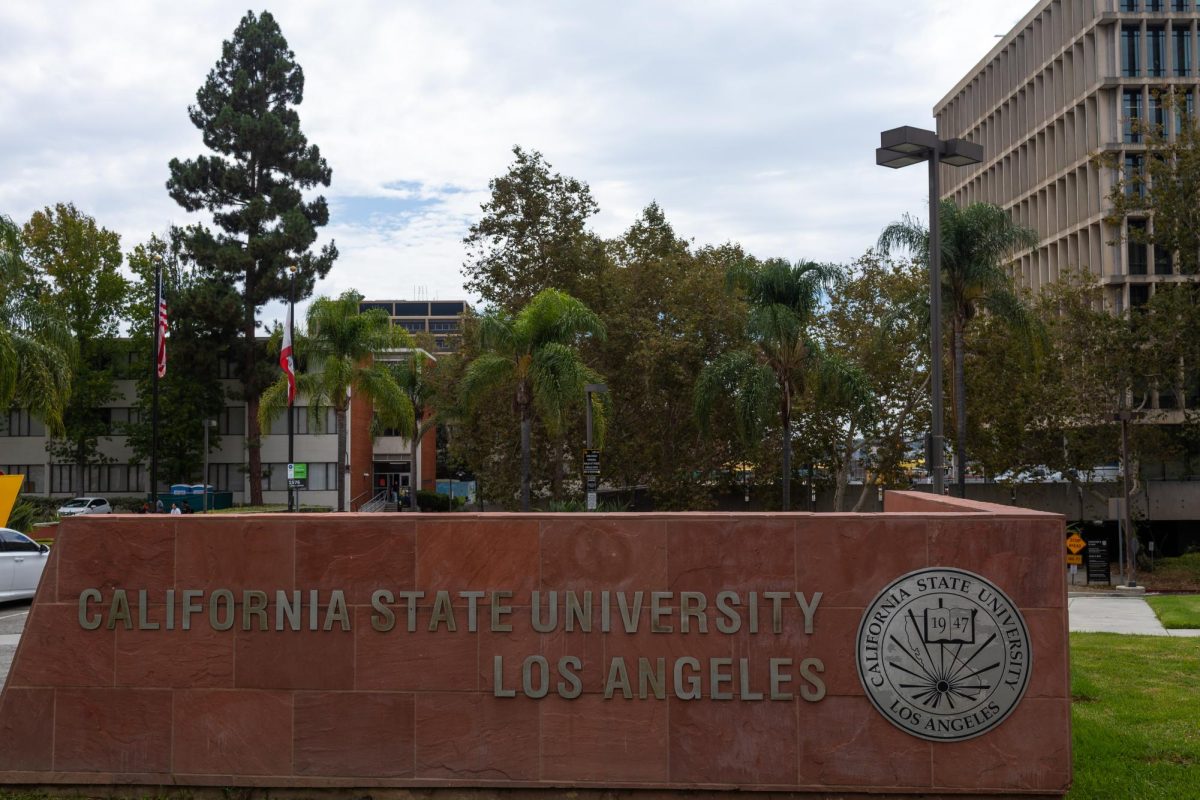Filled with color, culture, dance and music, Diciembre Mexicano brought Mexican traditions and holiday spirit to Cal State LA in late November.
The Luckman Theatre audience welcomed December with Baile Folklorico (Folkloric dance) performed throughout the holiday-themed show. Grandeza Mexicana Folk Ballet Company, a nonprofit, presented the choreographed and synchronized performances served to convey the celebrations and ceremonies in Mexican culture.
The opening dance was used to showcase the religious aspects of Christmas, such as the story of the Virgin Mary, Joseph and the birth of Jesus Christ. The show also featured a performance with a mischievous devil who mocked the dancers and stroked the backs of some of the women before being dramatically captured by the Archangel.
The magic of the holidays was also captured with a performance that involved duendes (elves) and rag dolls that come to life. One of the acts involved the synchronized tossing of prop knives from one hand onto the other – blindfolded.
The play resonated with Cal State LA alumnus Silvino Ocampo, who attended the holiday show alongside family. Although Ocampo doesn’t participate in traditions such as Las Posadas (traditional parties), he still enjoys Mexican culture. “Mi parte favorita…fue todo relacionado con la danza Azteca.”
“My favorite part…was everything related to Aztec dance,” said Ocampo, who has a growing kinship for his roots in the Aztec culture.
The play was also significant to 16-year-old, Mathew Villegas, one of the folkloric dancers who portrayed a female in the play. The Grandeza winter show was a first for Villegas, who has been dancing for two years.
“Dancing with Gradenza really changed my life in a way. It made me express my sexuality more, and my passion for my culture, and I get to express that with a dress,” said Villegas who added that dance has no gender.
Audience members played a role in keeping the atmosphere lively, with some occasionally letting out Mariachi yells and whistles, and some others steadily clapping along to the rhythm of the songs. On the way out of the theater, attendees were gifted with candy bags similar to ones often handed out at Mexican parties.
The folkloric dancers also dove into the cultures of Guerrerro, Nuevo Leon, Jalisco and more. The costumes, dance and music differed in each region, but to audience members, the passion conveyed by the performers remained constant.





















